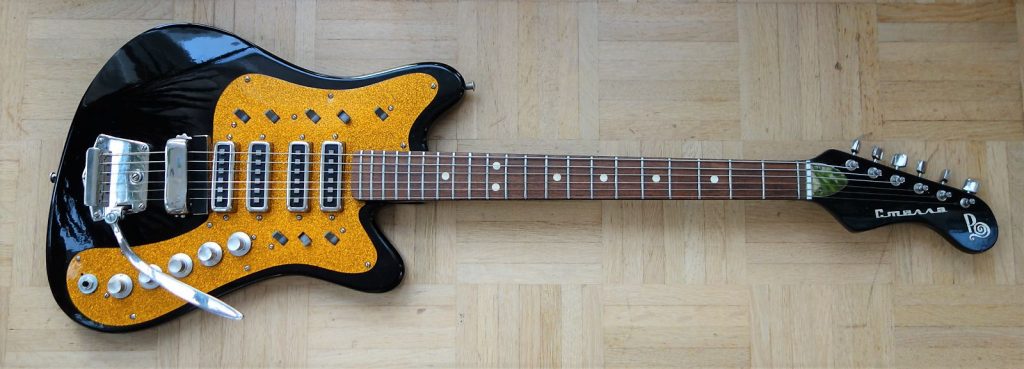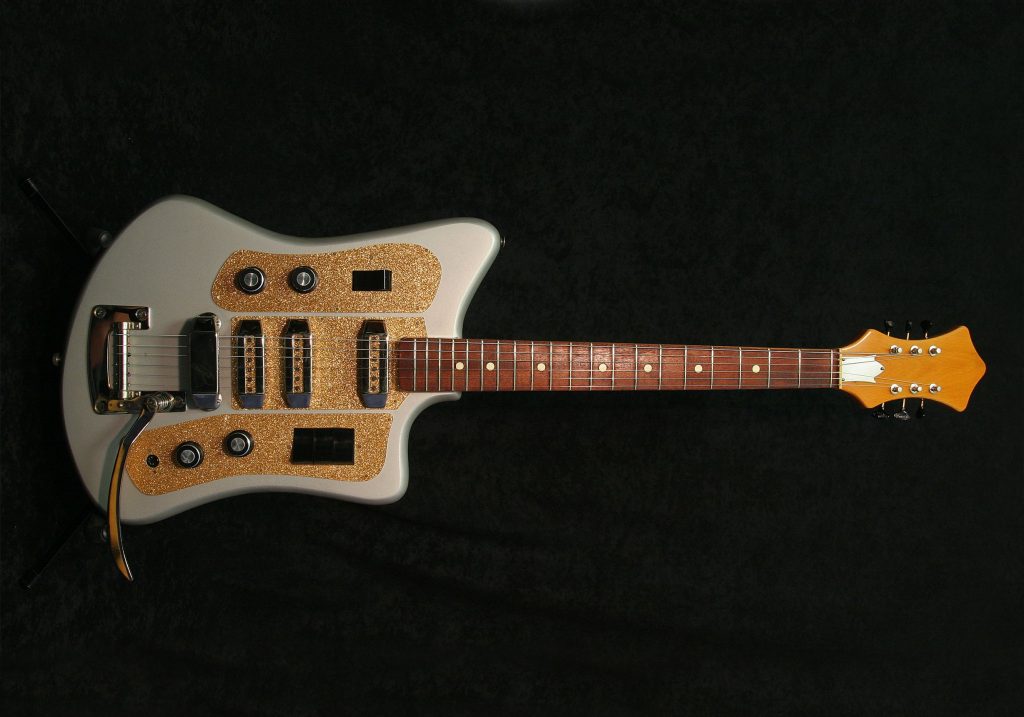Behind the Iron Curtain, things were funky
In a time when Western guitars were one of many unattainable imports, creativity and innovation was the way to go for Eastern European guitar manufacturers living in the Soviet-era.
Needless to say, their experimentation resulted in a DIY culture of guitar building that produced some truly bizarre models.
Read all the latest features, columns and more here.
Tonika
Tonika manufactured some seriously unique guitars as a result of their handmade approach and lack of specifications.
One of the earliest Soviet commercial electric guitar brands, Tonika developed products including the 1960 Tonika EGS-650, one of the company’s first standard production guitars.
These guitars feature birch bodies, ebony fingerboards and highly unusual shapes.

Aelita
The Rostov factory producing some of the Tonika models saw two new additions to Soviet guitars in the 1970s: the Aelita and the Bas.
Re-released in 1980, the Aelita-2 was designed with a more conventional aesthetic but included non-traditional electronics: think four pickups and stereo output.
Despite the odd electronics, this guitar was reported as having a nice, bright sound.

1960’s Jolana Star IX
This model was produced in Czechoslovakia by a brand that generated high demand in the USSR.
The demand for Jolana products in the USSR was second only to East Germany’s Musima.

1960 Orfeus Plovdiv Bass
Not a lot is known about the history of Bulgarian brand Orfeus but their signature style of an unusual design and distinctive paint job can be seen in their 1960 Plovdiv Bass.
The addition of the silver pickguard over the sunburst finish is a particularly unique look.

Ural 650
Fast forward to the mid-1970s and this Soviet brand became popular for mass-producing its inventive guitar models. Ural’s guitars were cheaper and made in large quantities with more mainstream styling.
The Ural 650 is especially interesting with its distinctive cutaways and samurai-style headstock.

1970s Roden Bass
This model is especially interesting as its strange curves resemble the 1977 Guild B-301.
The Roden Bass, however, was produced in the USSR in the 1970s: perhaps an influence for the Guild B-301?

Stella
Stella produced electric guitars that gave them the reputation of producing one of the most ambitious models of the Soviet era, the Stella Electric Guitar.
This model boasted a whole lot of range and a unique sound. Other features include four split stereo pickups, two stereo modes, one mono mode, five knobs, and eight switches.

Formanta Solo-II
This guitar was produced in a Soviet factory in Borisov that still exists today.
But while the Borisov factory now exclusively produces acoustic guitars, they favoured electric in the 1980s with three unique models: the Formanta, the Solo-II, and the Bas-I.
The Formanta Solo-II is packed with onboard effects that give it a particularly odd look. It’s hard to find but worth the search.

This article was originally published July 14, 2017.
Read more here.

